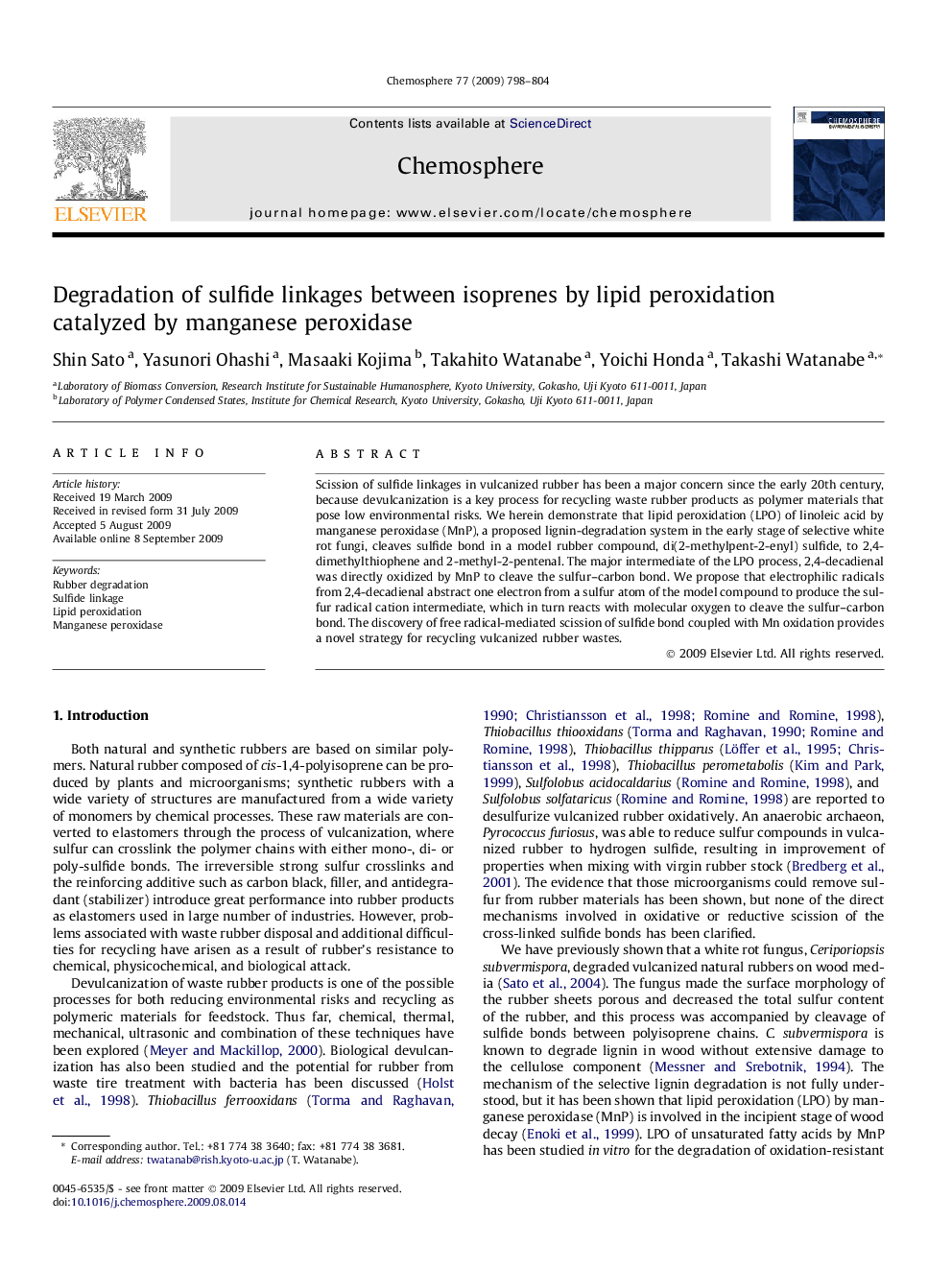| Article ID | Journal | Published Year | Pages | File Type |
|---|---|---|---|---|
| 4412582 | Chemosphere | 2009 | 7 Pages |
Scission of sulfide linkages in vulcanized rubber has been a major concern since the early 20th century, because devulcanization is a key process for recycling waste rubber products as polymer materials that pose low environmental risks. We herein demonstrate that lipid peroxidation (LPO) of linoleic acid by manganese peroxidase (MnP), a proposed lignin-degradation system in the early stage of selective white rot fungi, cleaves sulfide bond in a model rubber compound, di(2-methylpent-2-enyl) sulfide, to 2,4-dimethylthiophene and 2-methyl-2-pentenal. The major intermediate of the LPO process, 2,4-decadienal was directly oxidized by MnP to cleave the sulfur–carbon bond. We propose that electrophilic radicals from 2,4-decadienal abstract one electron from a sulfur atom of the model compound to produce the sulfur radical cation intermediate, which in turn reacts with molecular oxygen to cleave the sulfur–carbon bond. The discovery of free radical-mediated scission of sulfide bond coupled with Mn oxidation provides a novel strategy for recycling vulcanized rubber wastes.
